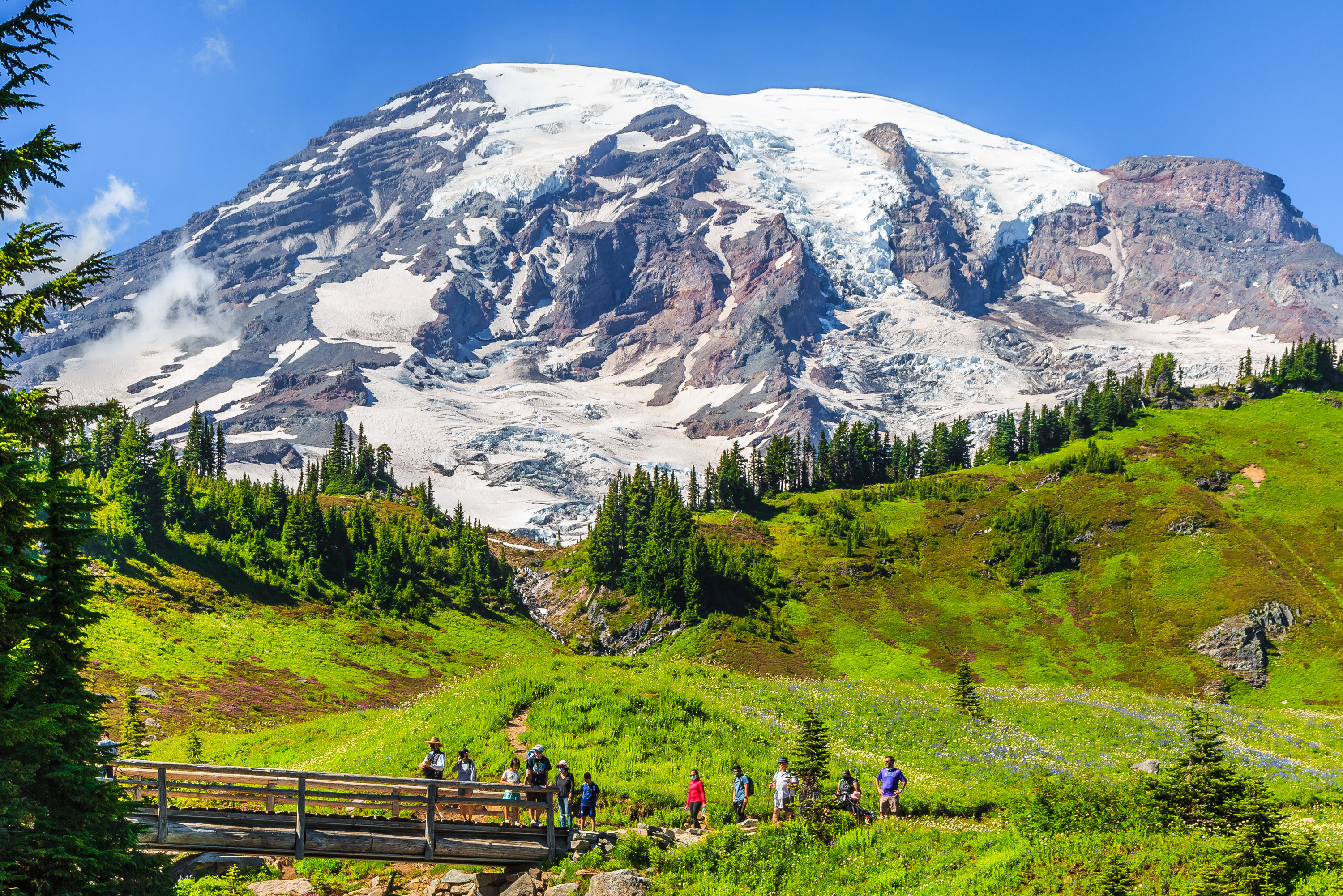Mount Rainier’s Top Ranger Introduces a New Era at the National Park

Image: Chona Kasinger
On his very first day as superintendent of Mount Rainier National Park in late July 2021, Greg Dudgeon took a hike and knew he had a problem. On the short ramble up a paved trail to Myrtle Falls, which in late July roars down its 60-foot height amid the Paradise subalpine meadows, the sheer number of people he saw was, he recalls, “surreal.”
The parking lot was crammed with cars. Hikers clogged the route while others stepped off the path to peer at a flower or take a photo, each footprint devastating to the fragile meadow. He heard Australian accents and conversation in German. Dudgeon saw more people on that half-mile route than he’d encountered in a year in his previous gig in interior Alaska. Maybe several years, he thinks.
“Frankly, I felt a little bit unsettled for people,” says Dudgeon, “I couldn't imagine that it was exactly the experience they had imagined.” The two parks he’d been overseeing in Alaska, Gates of the Arctic and Yukon-Charley Rivers, could hold almost 50 Mount Rainiers between them—but they get nothing like the more than 2 million people who stream to our local volcano every year. He knew one of his first missions as the superintendent of Mount Rainier National Park would be to somehow stem that tidal wave of visitors.
This summer marks 125 years since Rainier was named the nation’s fifth national park, but recently the summer lineups have snaked one, two, three miles or more down the highways that feed its entrance stations. Dudgeon has worked the entrance booths, where on busy weekends waiting cars might idle just outside the park, only entering one at a time, as single cars exited.

Image: Chona Kasinger
It's not that the problem is new, exactly; Mount Rainier’s earliest roads, constructed in 1908, were the first national park routes built specifically for private vehicle use. Today they include byways that snake up to 6,400 feet, cut into mountainsides and braced by masonry retaining walls. And yet, as Dudgeon perused an administrative history of Rainier to prep for his new job, he noticed that within only a few years of the roads’ debut, the national park was already allocating a third of its staff to traffic control.
In the internet age, the solution is timed-entry reservations. This year, summer visitors will need to book ahead to get in between 7am and 3pm; the $2 golden tickets, each good for a two-hour window, are being released in batches online (with a certain percentage held back to be available the night before each summer day).
“It's a grand experiment,” says Dudgeon of the pilot project, which underwent public comment in 2023, with the goal of not necessarily reducing visitation but redistributing it to afternoon hours and weekdays; Rainier joins the likes of Glacier and Arches National Parks with the system.
Rainier’s administration goes beyond traffic woes. In less than three years Dudgeon has also dealt with an expanded lahar detection system, erosion at the Carbon River corner of the park, a new search and rescue base, and the question over whether airplane and helicopter tour companies should be allowed to buzz the mountain. The 30-year National Park Service veteran says it’s one of the only places that could have pulled him from the natural idyll of Alaska, where he photographed humpback whales and adopted retired sled dogs over the decades.
Though his first day was a doozy, one other day of his Rainier tenure sticks out to the superintendent. In early August 2022, he got a call to meet Anthony Fauci, chief medical advisor to President Biden, at the Sunrise meadows. “This was the first vacation Dr. Fauci had taken since the beginning of the pandemic,” the first time he had left his cell phone behind, says Dudgeon. “This is where he wanted to come.” Seeing the mountain through his eyes reminded Dudgeon of how revitalizing our 14,410-foot volcano could be.
That day was just another episode in Mount Rainier National Park’s 125-year history, and its millennia-long existence as a natural place. Seeking balance between protecting Rainier and opening its doors—for Australians seeing their first marmot toddle across an alpine meadow or for public health officials reeling from a global pandemic—defines his work. “I like to think of national parks in terms of chapters of the nation's family album,” Dudgeon says. “They’re the iconic landscapes. They’re the authentic history.”




